HOUSE OF MULTIPLE OCCUPANCY (HMO)
Houses of Multiple Occupations can be excellent investments for landlords and property owners alike, either as their strategy or as part of a diverse property portfolio.
Are you looking to get into the buy to let market and find potential property purchases with great rental yields? That’s something we can help with.

Discounted property with high yields

Transparent & honest throughout the process

We’re property experts with years of experience

Investment opportunities tailored to your requirements
WHAT IS A HOUSE OF MULTIPLE OCCUPANCY HMO
A House of Multiple Occupancy (HMO) is a rented property occupied by at least three people who are not from one household or five or more people, forming two or more households. All households share facilities such as the kitchen or bathroom, regardless of the property’s number of storeys.
Usually, a House of Multiple Occupancy is more profitable than standard rental properties, and HMOs are common types of accommodation in city centres for students and young, single professionals.
HMOs can also be hostels, several bedsits in a large building, or a block of converted or self-contained cluster flats.
WHAT ARE THE COMMON FEATURES OF A HOUSE OF MULTIPLE OCCUPANCY?
A House of Multiple Occupancy should be solely residential. The occupants must use the property as their only and primary residence, where at least one of the household members pays rent.
WHAT IS A HOUSEHOLD?
A household is classed as either a single person or members of the same family who live together. A family consists of people who are:
- Married or living together (including same-sex couples).
- Relatives or extended family (grandparents, niblings, siblings).
- Step-family.
For example, a couple living with a flatmate would be two households even though there are three people. Three young professionals living together with no relationships count as three households.
But, a father with two children and a dad living on your property would only count as one household because they are all related.
What is a shared facility?
A shared facility is where tenants share basic amenities such as a toilet, personal washing or cooking facilities. To meet legal requirements, you will need to either carry out a standard test, self-contained flat test or converted building test.
Start your property journey today
Start your property journey today
ARE HOUSES OF MULTIPLE OCCUPANCIES PROFITABLE?
Houses in Multiple Occupations are usually more profitable than standard buy-to-let properties as there are more rooms in an HMO to let separately, earning multiple income streams.
However, there are several costs that you need to be aware of when setting up and running an HMO property:
- The initial conversion costs include installing extra bathrooms, kitchens, fire doors, door closers and locks.
- Finance Costs and Insurance.
- Council Tax and Utility Bills.
- Repairs & maintenance.
- Rent arrears and voids.
Who are the best tenants for a HMO?
With house prices still unattainable for many young people, the demand for affordable rented accommodation remains strong.
HMOs are often very popular within urban areas, as some landlords decide to let the entire properties out to the local council as low-cost housing by taking a discount but gaining a consistent income.
Students are always a safe bet with HMOs as they have a set course length, enabling you to have long-term tenants and plan for when their courses end. However, they can cause disruptions due to partying and noise.
Young professionals rent much later, into their 20s and 30s, as they cannot climb onto the property ladder. They tend to be slightly tamer than students and more mature.
Why a HMO might be a good investment for you
As with any property investment, a particular aspect of risk is involved, so it is essential to weigh up the advantages and disadvantages of HMOs.
What are the advantages of HMO’s?
Houses in Multiple Occupations can produce higher rental yields than traditional buy-to-let properties, sometimes as much as three times higher.
Due to the constantly growing demand for students, young professionals and shared living accommodation options, there remains a robust demand for HMOs.
If one tenant leaves the property, you will still have other tenants paying rent while you find a replacement tenant.
What are the disadvantages of HMO’s?
HMO investors often purchase regular family homes and convert them into co-inhabiting properties. This means an HMO mortgage is only possible once the property is fully restored, as HMO investors usually have to consider other forms of bridging finance.
Houses in Multiple Occupations are subject to more regulations than standard buy-to-let properties. Most HMOs require the local council’s licence or planning permission to be legally let out.
As HMOs are let out on a room-by-room basis, they are almost always rented out fully furnished, which means you will spend more money upfront on furnishing properties.
WHAT ARE THE DIFFERENT TYPES OF HMO’S?
There are two main types of HMOs; 254s and 257s, but it is essential also to note that there are also Bedsit HMOs and Shared Houses.
Just because a property isn’t a licensable HMO, it doesn’t mean it is exempt from HMO legislation; if any of your properties meet the legislation requirements, you must require a licence or planning permission or risk receiving hefty fines.
All privately rented properties must comply with a whole host of legislation, notably the HMO Management Regulations 2006 for 254 HMOs and 2007 for 256 HMOs.
What Are 254 HMOs?
254 HMOs are properties that legally require you as the landlord or property owner to request a licence depending on your council’s requirements. 254 Houses in Multiple Occupations need to meet the following criteria:
- Have three or more tenants.
- Have more than one household.
- Have sharing facilities.
What Are 257 HMOs?
257 HMO’s are properties that legally require the freeholder and block managers to request a licence depending on the local council’s requirements. 257 HMO’s need to meet the following criteria:
- The property has been converted into self-contained flats.
- The conversion did not comply with the relevant Building Regulations in force then and still needs to comply.
- The apartments must be less than two thirds owner occupied.
Building Regulations were enacted on 1st June 1992, so any property before this date won’t comply with the regulations and vice versa. If your property has a building certificate for converting to flats, you will not be a 257 HMO.
TYPES OF HMO QUESTIONS
Bedsits are commonly non-cohesive living arrangements with locks on the bedroom door and individual tenancy agreements. A bedsit is a rentable unit or room inside the HMO building.
Sometimes HMOs will be referred to as shared houses and are a popular solution for students as the rent is more affordable than a studio flat.
Property investors and owners benefit greatly from shared houses as rents from multiple shared houses usually produce higher rental yields than a standard buy-to-let.
Shared houses are a cohesive living arrangement where tenants have full access to the whole property, on the same tenancy agreement and have no locks on the bedroom doors.
Putting locks on the bedroom doors within a shared house will be classed as a bedsit.
A Multi-let property and HMOs are very similar as they are rented out to unrelated tenants with shared facilities. But, a multi-let property is unlicensed.
Halls of residence owned by universities or other educational institutions are not classed as HMOs, but if the shared accommodation for students is privately owned, it is classified as an HMO.
A buy-to-let only accommodates one household, whereas an HMO accommodates multiple households. You can make much more significant returns on an HMO than a BTL, which is one of the most important motivations for landlords making the switch.
If you are a live-in landlord, you can have up to two unrelated lodgers within the accommodation before applying for an HMO licence.
We’ll help you find your next HMO
We’ll help you find your next HMO
HOW TO CONVERT A PROPERTY TO A HMO
If you have a property that you wish to convert into an HMO and make it suitable for tenants, then you will need to follow the rules of compliance above while also considering space, layout, facilities, furniture and appliances.
The local council will visit your property within the first five years of being an HMO and conduct a Housing Health and Safety Rating System (HHSRS) risk assessment to identify any issues.
If the building is found to have any risks, such as asbestos and radiation, then you will need to address these with the utmost urgency.
How do you convert rooms suitable for a HMO?
In your property, you may have some rooms that aren’t currently fit for purpose and will need to move or construct walls for your property to become suitable for multiple households.
We advise that you gather professional advice before you make any structural changes to your property and to see whether you need to request planning permission to make any alterations.
We also advise you to complete all the alterations and room conversions before you begin to source tenants, as tenants do not want to move into a building site.
5 TIPS FOR A HMO PROPERTY CONVERSION
One great way to create more space for tenants is to convert a garage or attic into a bedroom or living space, which will require planning permission.
Remember that not only are you trying to maximise space but also fit the needs of your potential tenants, who may be put off by the fact there is no living room or reception area —- try and make sure any alterations would suit a tenant to live there.
If you want to attract long-term tenants, creating an atmosphere suitable for all seasons is essential; seating and outdoor BBQ areas are likely to be famous for modern long-term renters.
Kitchens and bathrooms are very often the rooms people spend the most time in, so they can be a deal breaker for many prospective tenants. Ensure you furnish and finish the kitchens and bathrooms to a high standard.
Saving costs should be high when converting a property, but you won’t want to cheap out when it comes to fridges, sofas and beds, as these are the appliances that are mostly to break if bought cheap. Spend slightly more on the initial investment and reap the benefit of not having to replace it again.
How easy is it to find a property?
Finding a property to buy and convert a building into an HMO or buy an existing one has never been easier!
At The Property Sourcing Company, we pride ourselves on being able to match you with tailored property straight to your inbox.
All you have to do is join our database, which is entirely free, and we will contact you to discuss your requirements. Then if we have an existing property that matches your described criteria, we will send it straight to you.
If you don’t match immediately, don’t worry! With hundreds of properties being added to our database annually, opportunities are just around the corner!
Our service doesn’t just stop there; once you have matched with the property, we will help you negotiate any deals and help you at every step.
How to apply for a House in Multiple Occupation licence
If you want to turn a property in your portfolio into an HMO, you will need a licence or planning permission from your local authority. There are several conditions to an HMO licence, and there is also some cost.
An HMO licence is only valid for a maximum of 5 years, and you must renew it before it runs out. You must apply for a separate licence for each HMO you run if you have a more comprehensive portfolio.
To apply for an HMO licence and avoid receiving an unlimited fine for renting out an unlicensed HMO, you must abide by the following:
- The property is suitable for the number of people (which will vary depending on the size of the building and its facilities).
- The property manager or agent is considered ‘fit and proper’, meaning they have no criminal record or breach of landlord laws or code of practice.
- You must also send the council an updated gas safety certificate every year.
- You must install and maintain smoke alarms.
- You must provide safety certificates for all electrical appliances when requested.
Depending on the local council in which the property is located, they may add other conditions to your licence, like improving the standard of your facilities. You can appeal to the First Tier Tribunal if you do not agree with any of the conditions set.
What is the process of applying for a HMO licence?
Only the person managing or having control of the HMO can apply for the licence, which is property and person-specific —- it cannot be transferred.
Please note that any time delays between processes will differ depending on the council you are applying to.
Houses in Multiple Occupations can produce higher rental yields than traditional buy-to-let properties, sometimes as much as three times higher.
Once the council has received your application, they will contact you to arrange an inspection which must take place before they can issue or renew your licence.
The council will look for significant hazards under the HHSRS, HMO Management Regulation breaches and assess the property’s overall suitability for occupation against the regulations and 2018 HMO Standards.
The information gathered during this inspection is used to draft necessary licence conditions and inform our decision on the Stage 2 Licence Fee level, plus any other courses of action they deem necessary.
Once the council is satisfied that the property, licence holder and management arrangements are suitable, they will email a draft licence (the intention notice). You will then need to pay the Stage 2 Licence fee within 14 days; if you do not, you will be hit with a higher-rate fee.
The final licence will be granted once you pay all fees in full.
Within the HMO licence, you will receive the mandatory licence conditions and any property-specific conditions to regulate the management, use, occupation, condition or contents of your HMO.
If the licence is not granted, then the council will issue you with a notice that you can appeal.
You have 14 days from when the Intention Notice was issued to object to any aspects of the licence conditions. The council will then consider your representations and either accept or reject them.
If the council accepts your representations, they will issue you a revised draft licence (Modification Notice) which allows you a further seven days to object to other conditions.
When the representation period expires, the council will issue you your HMO licence (Decision Notice). The licence is legally enforceable from the day it is published and lasts a maximum of five years, but depending on the conditions can be issued for shorter periods.
Following the council’s HMO licensing policy, any decisions made can be appealed to the First-tier Tribunal within 28 days of receiving the decision notice.
According to the conditions of your licence, the council will re-inspect your property at intervals and also before renewing your licence. You must comply with the requirements of your licence, or you may be prosecuted, or the council will revoke your licence.
You must renew your licence before it expires; if it expires or you wish to change the licence holder, you must make a new HMO application.
The total cost of applying for an HMO licence will depend on the council you are using, but the total cost will be around £975.
This can be broken down into the First Stage Fee, which is £635 and the Second Stage Fee which is £340.
It’s also important to note that some councils may offer discounts to standard rental members.
We can guide you through the HMO process
We can guide you through the HMO process
WHAT ARE THE HMO REGULATIONS & STANDARDS?
You must follow many conditions as a landlord to ensure the safety and security of your tenants, from providing enough facilities to providing them with their tenancy agreement to paying council tax.
What kind of tenancy agreement do you need to run a HMO?
As the landlord, you can manage your property by setting up a Joint and Severally Liable Agreement covering all the tenants or using an individual contract for each tenant.
Joint contracts are suitable for students or friends moving in together and usually require less administration as one overall agreement with one single rent payable. A deposit is typically in place, just in case things don’t go to plan.
Tenants are jointly liable for the rent and care of the property and are responsible for the bills and council tax.
Individual contracts are standard for large, low-cost or inner-city HMOs designed for young professionals. Each tenant will pay their rent separately; if one tenant fails to pay, the others don’t have to make up for the shortfall.
Individual tenancies are more of an administrative burden, with individual deposits to be collected and protected. As a landlord, you will also be liable for council tax and usually utility bills, though you can include this cost in the rent that you change.
What are the rules for tenants in HMO’s?
Tenants are responsible for ensuring that any repairs to their own belongings or minor repairs to shared areas such as changing light bulbs, are carried out.
Tenants’ rights are the same for HMOs as any other type of renting and are protected by the Tenants’ Freedom from Intrusion from Landlords.
WHAT ARE YOUR RESPONSIBILITIES IF YOU LET AN HMO?
By being a private landlord for a licensed HMO, you are responsible for maintaining the building and ensuring all faulty electrical wires, pipework, or heating are working effectively.
If the property has more than four occupants, then you should ensure that:
- There are enough rubbish bins for 4+ people.
- You provide your tenants with a written contract of their tenancy agreement.
- The property is not overcrowded.
- You have the electrics inspected every five years and gas safety checks yearly.
- Any shared areas and facilities are clean and maintained.
- Fire safety measures and working smoke alarms are in place.
- There are enough facilities for cooking and washing.
If fewer than four people are on the property, you should check with your council and licence conditions to ensure you cover all the correct bases.
What does fitness for human habitiation mean?
Landlords must comply with the Homes (Fitness For Human Habitation) Act 2018, which means all HMOs must be suitable for human habitation at the start of the tenancy.
You’ll meet the activity requirements by making sure your property is free from dampness, has proper ventilation and drainage and has a water supply. There are also 29 hazards outlined in the HHSRS regulations.
What is the minimum room size for sleeping?
To receive your licence in the first instance, you must ensure that the bedroom sizes in the property are at least:
- 4.64 square metres for a child under ten years old.
- 6.51 square metres for a person aged ten or over.
- 10.22 square metres for two people aged ten or over.
Depending on the local council, they may have higher standards for bedroom sizes, and they would give you time to meet these requirements or let you reduce the number of renters in the property.
Do you need to pay council tax?
You might be responsible for paying council tax on your HMO if it was built or converted to be lived in by more than one household or by two or more tenants or licences.
BUY TO LET OPTIONS
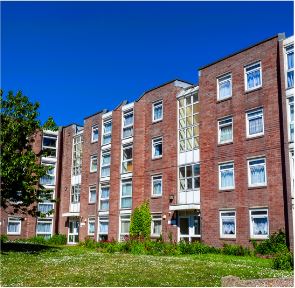
These tend to be normal residential houses, 2 to 3 bedrooms terrace, semi-detached, detached or flats.
They are houses that are suitable for the average renter and are sometimes known as vanilla buy to let properties.
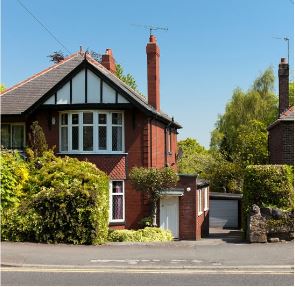
A House of Multiple Occupancy (HMO) is a rented property occupied by at least three people who are not from one household or five or more people, forming two or more households.

This type of Buy To Let is a freehold block which offers multiple, separate or independent residential units.
This can be a variety of different types of property such as blocks of flats or houses converted into flats.
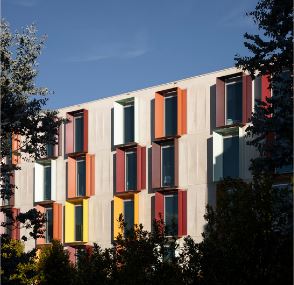
This is very similar to HMO’s and even are often referred to as non-licensable HMO’s.
They have many characteristics of a typical HMO but don’t require the licence, but they may still require planning permission from your local authority.

As the name describes, this is a commercial premises and it is when you let the property out to one or more businesses.
It’s often referred to as Commercial Landlord Mortgage, Business Buy To Let Mortgage or Commercial Investment Mortage.
OUR LOCATIONS
Thinking of buying a BMV property, but have a specific area in mind? To give you an understanding of just how broad your property choice is, here’s the areas where we most regularly buy BMV property…
We can help you find properties across the UK
We can help you find properties across the UK
EXAMPLES OF PROPERTY INVESTMENTS
Have we got your interest? Well, how do you know that we’re going to provide great deals? Just take a look at some of our recent sales in the area, they speak for themselves!
Want to see more of our deals? Check out our recent deals.
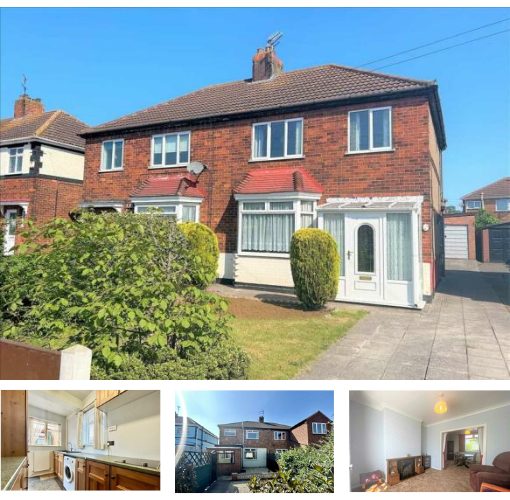
Buy Refurbish Rent Refinance
Scunthorpe, DN16
House, Semi-detached Freehold
25% BMV
Yield
8.3%
- Freehold
- Driveway
- Rear garden
- Close to local amenities and transport links
- Could achieve £700 – £750 pcm
- Vacant upon completion

Buy Refurbish Rent Refinance
Scunthorpe, DN16
House, Semi-detached Freehold
25% BMV
Yield
8.3%
- Freehold
- Driveway
- Rear garden
- Close to local amenities and transport links
- Could achieve £700 – £750 pcm
- Vacant upon completion
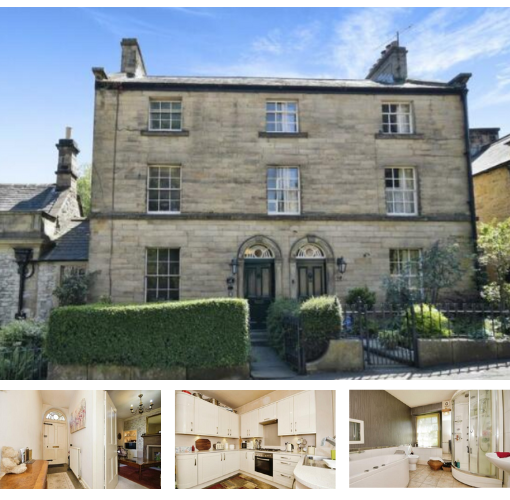
AirBnB
Bakewell, DE45
House, Terrace Freehold
22.1% BMV
Yield
15.2%
- Freehold
- Grade II listed
- £51,000 per annum gross rental
- £200 nightly average
- 70% predicted occupancy
- RICS £420,000 in current condition

AirBnB
Bakewell, DE45
House, Terrace Freehold
22.1% BMV
Yield
15.2%
- Freehold
- Grade II listed
- £51,000 per annum gross rental
- £200 nightly average
- 70% predicted occupancy
- RICS £420,000 in current condition
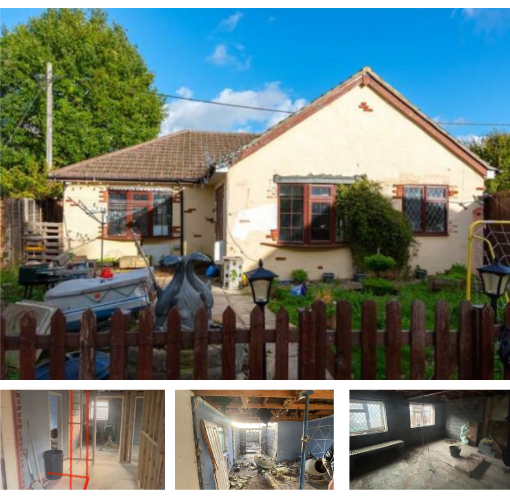
Refurb to Flip
Tadley, RG26
Bungalow, Detached Freehold
45% BMV
Exit Profit
20%
- Freehold
- Refurb opportunity
- RICS value £300,000
- Strong demand from owner occupier
- Great transport links
- 50 Miles from London

Refurb to Flip
Tadley, RG26
Bungalow, Detached Freehold
45% BMV
Exit Profit
20%
- Freehold
- Refurb opportunity
- RICS value £300,000
- Strong demand from owner occupier
- Great transport links
- 50 Miles from London
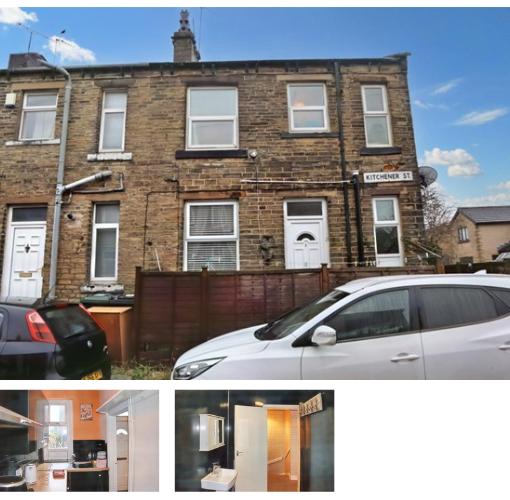
Buy To Let
Bradford, BD12 7DE
House, Terraced Freehold
24.3% BMV
Yield
10.8%
- Freehold
- 4.1 Miles to Bradford City Centre.
- 1.5 Miles to M606 & M62.

Buy To Let
Bradford, BD12 7DE
House, Terraced Freehold
24.3% BMV
Yield
10.8%
- Freehold
- 4.1 Miles to Bradford City Centre.
- 1.5 Miles to M606 & M62.




WHY SHOULD YOU INVEST WITH US?
While our investors database is great perk of our service, our team are the real reason you should buy your next investment property through us.
Without their extensive knowledge of BMV property, we wouldn’t be able to source you generously discounted deals, nor ensure your purchase is quick and hassle free. All ingredients that allow you to make wise investments and grow your portfolio fast.
It’s also our team that allows us to grow our relationship with you as an investor, even after your purchase has gone through. Buy your investment property through us and rest assured you’ll be far more to us than just a number – we’ll know you on a first name basis.


WHY SHOULD YOU INVEST WITH US?
While our investors database is great perk of our service, our team are the real reason you should buy your next investment property through us.
Without their extensive knowledge of BMV property, we wouldn’t be able to source you generously discounted deals, nor ensure your purchase is quick and hassle free. All ingredients that allow you to make wise investments and grow your portfolio fast.
It’s also our team that allows us to grow our relationship with you as an investor, even after your purchase has gone through. Buy your investment property through us and rest assured you’ll be far more to us than just a number – we’ll know you on a first name basis.
